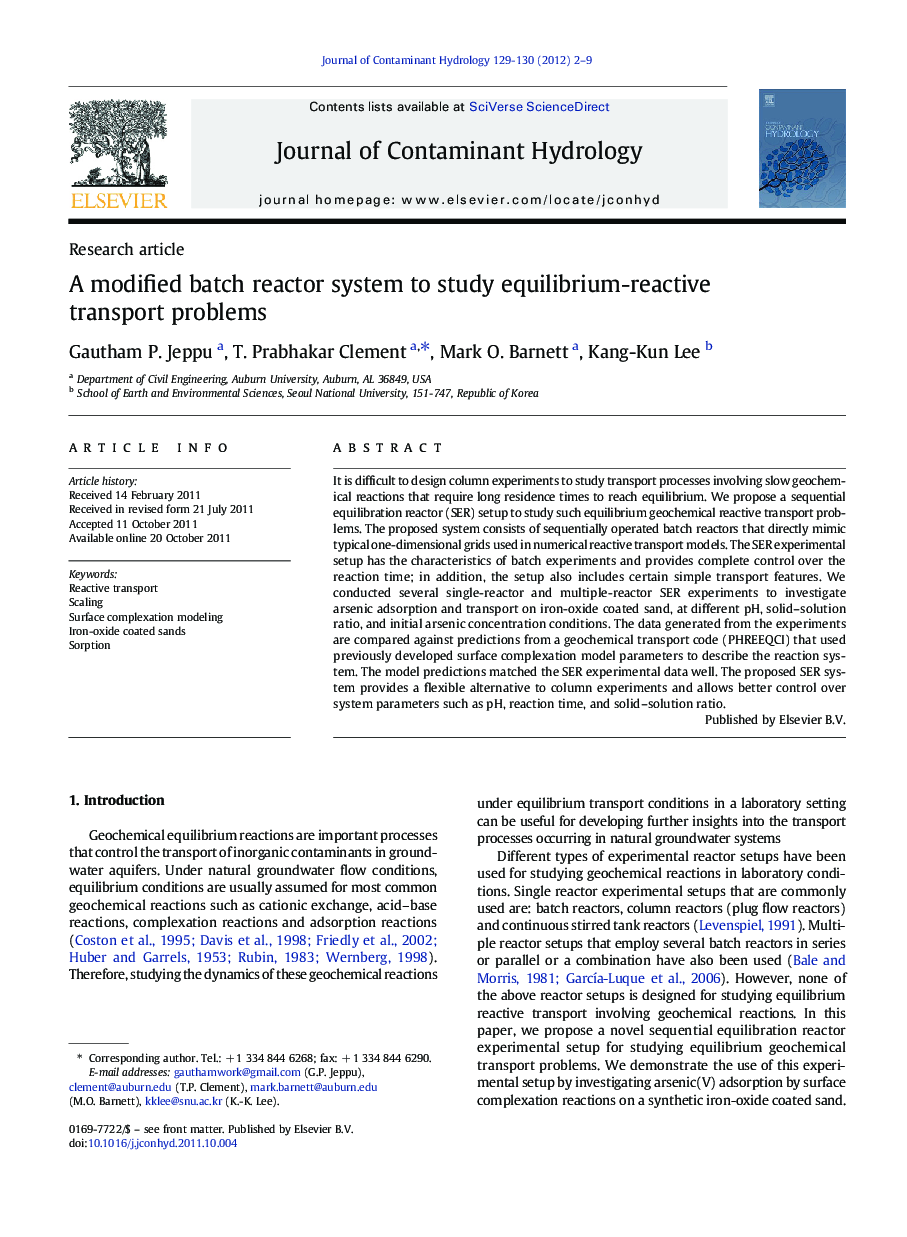| Article ID | Journal | Published Year | Pages | File Type |
|---|---|---|---|---|
| 4546868 | Journal of Contaminant Hydrology | 2012 | 8 Pages |
It is difficult to design column experiments to study transport processes involving slow geochemical reactions that require long residence times to reach equilibrium. We propose a sequential equilibration reactor (SER) setup to study such equilibrium geochemical reactive transport problems. The proposed system consists of sequentially operated batch reactors that directly mimic typical one-dimensional grids used in numerical reactive transport models. The SER experimental setup has the characteristics of batch experiments and provides complete control over the reaction time; in addition, the setup also includes certain simple transport features. We conducted several single-reactor and multiple-reactor SER experiments to investigate arsenic adsorption and transport on iron-oxide coated sand, at different pH, solid–solution ratio, and initial arsenic concentration conditions. The data generated from the experiments are compared against predictions from a geochemical transport code (PHREEQCI) that used previously developed surface complexation model parameters to describe the reaction system. The model predictions matched the SER experimental data well. The proposed SER system provides a flexible alternative to column experiments and allows better control over system parameters such as pH, reaction time, and solid–solution ratio.
► Provides a novel experimental procedure for investigating reactive transport problems. ► Data sets for testing reactive transport codes. ► Data for arsenic transport on iron-oxide coated sands.
